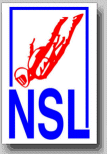
National
Skydiving
League
226 Pecan Street
Deland FL 32724
tel: (386) 801-0804
© 2003 - 2024
All Rights Reserved


226 Pecan Street
Deland FL 32724
tel: (386) 801-0804
© 2003 - 2024
All Rights Reserved


The NSL News had mentioned a few times in the previews of the event that the CamScore system would allow judging with slower speed viewings. The NSL News asked for recommendation for the judging speed by the IPC's Formation Skydiving Committee, and Chair Fiona McEachern suggested 70% of the full speed.
The teams were informed prior to the meet that judging with slower speed would be applied at the Shamrock Showdown 2009, and the collection of information and data began with Round 1 in DeLand. It was the first time in recent Formation Skydiving history that such a method was applied at a high-profile competition.


The significantly higher number of penalties were evenly spread across the board, as the judges applied the same standards very consistently and reliably for all teams. The NSL News did not notice any conflicts between teams and judges as of the point deductions.
One of the most interesting parts of the test was the question what kind of an impact the slower viewing speed would have, compared to other meets where the current IPC rules with only full speed viewings were applied. The NSL News tried to find this answer by simply looking only at the numbers.
|
Click here to order the Shamrock Showdown high-quality DVD in the NSL Shop |

The results confirmed what was already obvious during the meet in DeLand. There was a dramatically increased number of penalties. Chances are very little that the same teams had changed their style in the meantime, especially as the same impact was evident for each of the teams, except possibly Cross Road.
In other words, the same teams had probably a similar number of infringements already at the earlier meets - they were just not detected with full speed judging. The 70% viewing speed at the Shamrock Showdown and the sharp eyes of world class judges combined for a precise and painful punishment of the infringements.

The application of a slower speed viewing, like the 70% speed at the Shamrock Showdown, brings the judges and competitors back to a time when the scoring level was much lower, and the eyes could follow easier. 70% of a 23-point average performance looks like a 16.1 average level on the screen for judges and observers. France won the World Meet in 1991 with a 17.1 average...
The judges in DeLand mentioned that they also scored formations here and there that they may not have given to the teams with only full speed viewing. Even this other side of the coin confirms that the judges were closer to the truth in DeLand compared to other meets, which is important for the teams and competitors.

It will be interesting to see whether a slower judging speed will have a future in the sport. Judging will become even more challenging this weekend at Bodyflight Bedford when the best teams in the world will perform on a much higher scoring and pace level at the World Challenge 2009.
The last situation that teams and judges would probably like to have is judging at a pace so fast that there is barely time to push the buttons quickly enough and count the points. Judges have more important things to do...